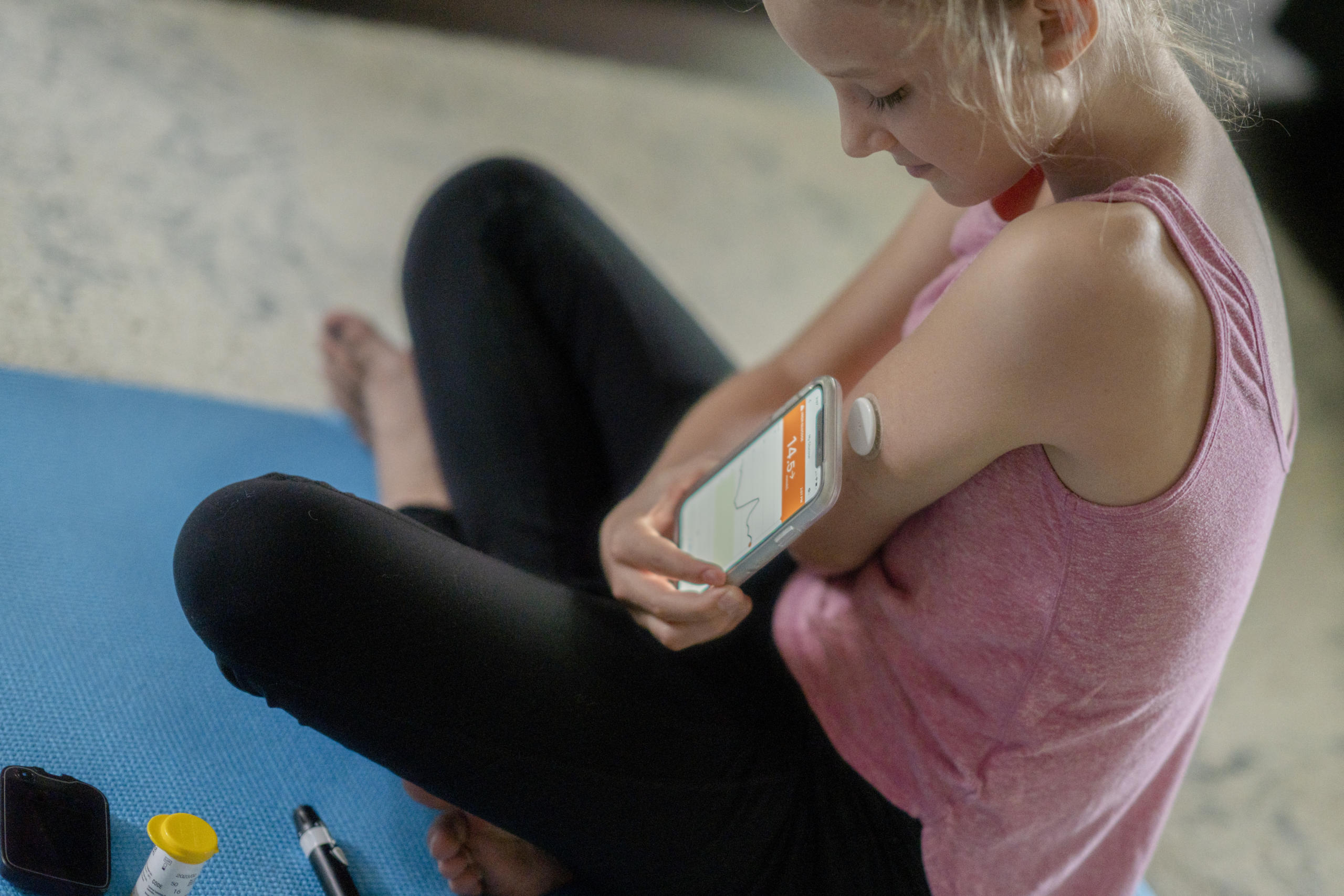
-
- Continuous Glucose Monitors (CGMs) are small, wearable devices that continuously measure a person’s blood-glucose levels
- Largely used in place of traditional glucose meters and regular finger sticks
-
- A sensor just under the skin measures the tissue-glucose levels in real time; CGMs are mostly worn on the upper arm or abdomen
- The levels are then relayed to a receiver, smartphone or watch, or insulin pump which displays the readings
-
- Fewer finger sticks
- Shows where your glucose is NOW and where it is trending
- Alerts you when your blood sugar is too low and too high
-
- You need to wear the CGM all the time (24/7) to get the most benefit
- Glucose readings are available all the time—this can be overwhelming for some people
- They provide more glucose data to share with healthcare providers and family members
CGM Systems Available in the U.S.*
| Abbott FreeStyle® Libre 2 / Libre 3 |
Dexcom G6® | Dexcom G7® | Medtronic Guardian™ Connect | Senseonics Eversense E3® | |||
|---|---|---|---|---|---|---|---|
| Ages | 4+ | 2+ | 2+ | 2+: Guardian Sensor 3 with Guardian Link 3 transmitter. 14+: Guardian Sensor 3 with Guardian Connect transmitter. | 18+ | ||
| How It Attaches to the Body | Sensor is inserted in one step, and integrated adhesive holds it in place. | Sensor is inserted with the Dexcom auto applicator and integrated adhesive holds the sensor in place. The transmitter is then attached to the sensor. | All-in-one sensor and transmitter are inserted with the Dexcom auto applicator and integrated adhesive holds the sensor in place. | Sensor is inserted with the use of a Medtronic one-press insertion aid, then the sensor and transmitter are held in place by an outer adhesive. | The sensor is inserted by a trained health care provider in the upper arm. The transmitter is worn over the sensor and is held in place by an adhesive patch. | ||
| Location | Back of arm | Abdomen or buttocks (2-17), Abdomen (18+) | Buttocks (2-6), Upper arm (7+) | Abdomen or buttocks (2-13), Abdomen or arm (14+) | Upper arm | ||
| Automatic Reading |
Libre 2: Automatic alarms Libre 3: Yes |
Yes | Yes | Yes | Yes | ||
| How to View Data |
Libre 2: Reader or Smartphone (Libre 2 app for iOS or Android) Libre 3: Smartphone (Libre 3 app for iOS or Android) |
Smartphone (Dexcom G6 app or CLARITY for iOS or Android), smartwatch, or Dexcom receiver | Smartphone (Dexcom G7 app for iOS or Android), smartwatch, or Dexcom receiver | Smartphone (Guardian Connect app for iOS or Android) | Smartphone (Eversense Mobile app for iOS or Android) | ||
| High or Low Blood Glucose Alerts | Yes | Yes | Yes | Yes | Yes | ||
| How to Share Data with Family Members | LibreLinkUp app | Dexcom G6 app (use “Share” feature) and Dexcom Follow app | Dexcom G7 app (use “Share” feature) and Dexcom Follow app | CareLink Connect Follow app or CareLink Connect website | Eversense NOW app | ||
| How Many Fingersticks to Calibrate | None | None | None | 2 per day | 2 per day | ||
| How Long the Sensor is Used | 14 days | 10 days | 10 days | 7 days | Up to 6 months | ||
| Connects to Insulin Pump | Freestyle Libre 2 Plus connects to Tandem t:slim X2™ (currently in development for Omnipod 5®) | Tandem t:slim X2, Beta Bionics iLet, and Omnipod 5® | Tandem t:slim X2 and Beta Bionics iLet (currently in development for Omnipod 5®) | MiniMed™ 770G or 630G | No | ||
| More Information | Freestyle Libre website | Dexcom website | Dexcom website | Medtronic Guardian Connect website | Eversense website |
*Updated February 2024
Getting a CGM
If you think a CGM might be right for you, consult with your physician.
Consult JDRF’s Health Insurance Guide to learn about insurance coverage of CGMs.
Resources for Healthcare Professionals
Visit JDRF’s T1D resources for healthcare professionals.
Original content developed by Med-IQ in collaboration with JDRF.